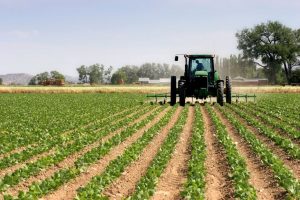Florida Farm by Numbers
The average small farmer in Florida makes $41,015 (2020). The actual amounts that Florida farmers will typically range from $35,539 to $52,894. Many factors can influence individual earnings.
Obviously, the total number of acres you own on your Florida Farm makes a big difference, but if you plan your business right, it is possible to make a good living from even 1 or 2 acres. It takes a lot of hard work, but it can be done. That said, the average farm size in Florida is 201 acres.
There are 45 million acres under cultivation and 47,000 commercial farms. 5,600 farms have sales that exceed $100,000 (2012). In the years 2002 to 2012, there was a steady decline in the average size of farms in Florida, reducing from 234.1 acres to 195 acres, but by 2020 it had increased again to 2001 acres.
What Agricultural Products are Currently Most Successful?
These are the big crops grown in Florida, with Large acreages of commercially grown plots. Many of these are associated with Florida, but you may be surprised at some of them.

Oranges
Most people associate Florida with orange juice, and indeed, Florida does account for a massive 66% of the USA market. This results in income exceeding $1.5 billion for Florida farmers. In the years 2011 to 2012, orange production was over 146.6 million boxes. The largest orange juice producer in the USA is in Florida. The company King Ranch has over a dozen orange groves across the south of the State with a total acreage of forty thousand acres of oranges.
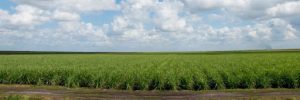
Sugar Cane
The Florida sugar cane crop value is $673 million, which is 49% of the USA market. 14.4 million tons of this crop was produced in 2011. Based in Belle Glade, Florida, the Sugar Cane producers Cooperative, consisting of 45 independent growers, produce more than 350,000 tons of raw sugar each year. That is 75% of Florida’s output.
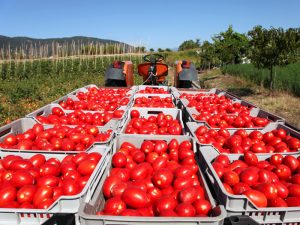
Fresh Market Tomatoes
Back in 2012, Florida growers had a 31% share of the market in the USA. They produced 29,000 acres of fresh-market tomatoes, worth $268 million. Lipman is the largest tomato grower in Florida (a massive presence) who controls 12% of the industry, worth $128 billion.
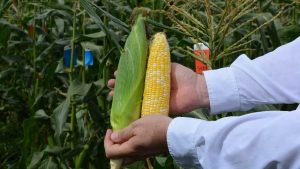
Sweet Corn
22% of the USA Sweetcorn market is produced in Florida. In 2012 that represented 442,000 acres, which was yielding 165 cwt an acre. Florida is the top producer of sweetcorn in the USA, and 15% of the agricultural acreage is sweetcorn. Consumption of Sweetcorn is going down in the USA.
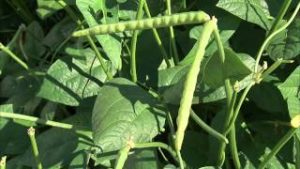
Fresh-Market Snap Beans
The 2012 Snap bean or pole bean crop in Florida was 56% of total USA production and worth $167 million. Most of Florida’s snap bean crop is destined for the fresh market; only a small percentage is processed.
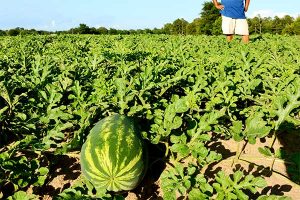
Watermelon
In 2012 Florida was responsible for 27% of the USA watermelon production. That is a segment worth $138 million. This was earned from a total acreage of 25,000 acres. Levy county has the largest acreage of watermelon, followed by Gilchrist county.
What are Profitable Plants To Grow in Florida?
We have looked at what the top crops are in Florida and seen how large the state’s agricultural production really is. Many of these markets are dominated by large conglomerates, and breaking into the market may prove difficult for a beginner Florida Farm. For example in Naples, the use of appliances to store crops can be challenging since there are not a lot of appliance stores in Naples Florida. Possibly those big crops like oranges may not be the most profitable ones to farm? It may well be more profitable to look at more niche products, where there is less competition. Here is a list of eight of the most profitable crops to grow on your Florida Farm, some of which do not need large farms.

Bamboo
There are businesses, landscapers that pay a lot of money for bamboo, well over $100 for one potted bamboo plant, and many growers find it hard to keep up with the demand. Bamboo is a crop where you can grow thousands of dollars worth of crop in relatively small acreage, selling the plants in pots. This is a great starter business.
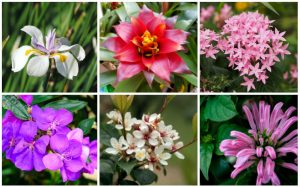
Flowers
It is possible to produce a profit from the very first year with Flowers. It is a high-value crop that is quite specialized. There are various products and business models to choose from, and the start-up costs are quite low. You can sell quite well at local Saturday markets.

Ginseng
The nickname of Ginseng says it all. Growers often call it green gold. The crop value is contained in the slow-growing roots. It is not a new crop in Asia, but the USA market is growing. You have to wait six years to get fully mature roots, so it is quite a wait before you start to earn; however, many growers will sell partly matured roots to provide an income during that period. A half-acre plot can make as much as $100,000 over six years from selling rootlets, mature roots, and seeds. The crop will only grow in northern Florida.
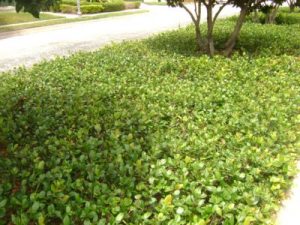
Ground Covers
Ground cover plants are growing in popularity. They are low maintenance for householders and reduce householder’s maintenance costs for their gardens. Growers in Florida can produce Ground Covers with high profits. Growers should earn up to $20 per square foot—an ideal crop for those with less land. The best ground cover crops to choose from would be beach sunflower, ferns, railroad vine, English Ivy, Asiatic Jasmine.
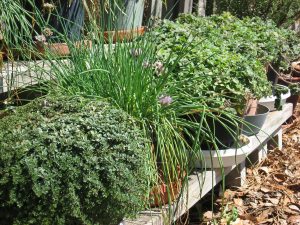
Herbs
Florida residents can start a profitable Herb business quite easily. There is a growth in interest for medical herbs like Lavender. Many small nurseries only grow Lavender as the demand is so high for medicinal and culinary herbs. Around 24 commercial growers in Florida undertake commercial herb production. There are less than 500 acres under cultivation. Some are grown under glass, others in fields.

Landscaping Trees and Shrubs
A few years back, in a 37 Florida-based Ornamental plant nurseries study, the average firm had sales of $2.71 million. The state of Florida is the second biggest producer of ornamental shrubs and trees in the USA. Sales have remained fairly consistent over recent years with no substantial growth.
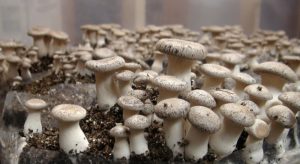
Mushrooms
For those with little space, commercial mushroom growing can be a way of producing a great return. Oyster mushrooms, for example, can produce 25 lbs per year for each square foot. At $7 a pound, that is $17,000 worth of mushrooms from just 10ftx10ft. Larger plots can obviously prove quite profitable using these figures.
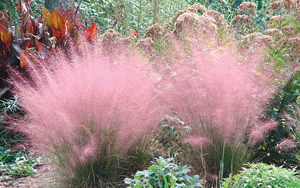
Ornamental Grasses
Florida Homeowners are using more and more ornamental grasses because they are drought resistant and low maintenance. They can be used for ground covers and to create privacy barriers. Using pots, it is not unrealistic to grow thousands of plants in quite limited space.
A New Opportunity for Your Florida Farm in 2020
Following the 2018 Farm Bill, the Cannabis plant was divided into two varieties, which allowed States to create structures to oversee Hemp’s legal production. Florida took advantage of this and passed the Hemp Bill giving Florida farmers a golden opportunity to capitalize on this new crop.
Hemp is grown in a very similar way to many Florida fruits and vegetables using raised beds and plastic, a method that is not common elsewhere.
The Florida State advisors suggested that your Florida Farm Hemp could be a useful rotational crop that allows diversification for existing growers. It is a product that has high demand in the market.
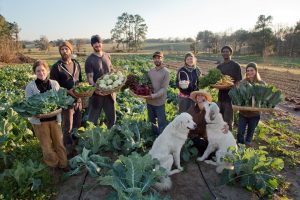
Starting with a Florida Farm
Beginning farmers have a variety of different challenges that experience farmers do not have to face. The rising cost of farmland, obtaining starting capital, and the lack of experience and learning, to name just a few.
The Department of Labor says that Small scale farming such as horticulture and organic farming at a local level is the best opportunity for Florida framing entrants to be successful as a start-up. Fewer people are interested in a farming lifestyle than before, and many farmers are approaching retirement. These two factors suggest that there could be more farms available to own or lease.
Getting the right finance for a Florida Farm can be tough. However, some specialist organizations can help. These include Farm Credit Associations of Florida and Farm Service Agency, who may be able to assist.
A recent survey suggested that the average cost of farmland in Florida ranges from $2,700 per acre of unimproved land in the North West of Florida, rising to almost $10,000 per acre for orange groves in central south Florida.
What You Need to Know
No doubt you have ideas in your head about the kind of Florida Farm that you want to own. Still, before you do anything, you should take a peek at the U.S. Department of Agriculture’s National Cooperative Soil Survey to ensure that this is a good idea.
- Other information you need to be certain about is
- The water source for the farmland. How much water your farm is going to require each year
- The topography of the land
- What comes with the farm (Land, fences, outbuildings, and any barns).
The Farming Lifestyle
A heartbreaking sight, all too frequently seen in Florida, is that of the small farmer forced to sell-up and move back to the suburban life and a nine-to-five job because they could not make enough to survive. Typically, these are individuals who have not researched the economics of starting a farm adequately. They were in love with what they saw as the lifestyle but were not prepared for the realities. What appears to work in movies is often not profitable in reality. Investigating the right crop, understanding the business, and working longer hours than you are used to, are the reality of starting a farm.
Farm subsidies to the big corporate farms make it hard for small farmers to compete. Taxes are spent subsidizing these big producers (your competitors), who operate in a very different way to the small farmer. As a small farmer, you will be working hard, harder than you have ever worked before, and this will leave little time for business planning and marketing plans.
How to Make a Success of a Small Farm in Florida
You need to research your market, what the true expenses of running a farm will be, and most of all, check out the State and local regulations that could impact your business.
- Regulations for selling raw milk
- Regulations regarding the storage of farm fresh eggs
- Property Codes
- Do you need a license or certification?
- If the public will visit the farm, what about restrooms and accessibility ramps, etc
- Regulations about the distance from animal housing to neighboring residential properties
The paperwork involved in starting a business can be enormous, but do not be tempted to leave it. That can prove very expensive later. Make a business plan as you would for any other business, work out the steps required to reach your goals.
Considering one of your family continuing with their job while you start the farm. This extra income will help with the transition to full-time family farming.
Perhaps my main suggestion would be to choose the type of crop you intend to sell carefully. Understand that market. Ideally, have more than one crop so that if something goes wrong, you do not lose all your income. Look at the list of profitable crops I have supplied and investigate each one.
Final Thoughts
You CAN make a good living if you plan your Florida Farm and do things one step at a time, choosing the right crops and spending time on business plans and marketing. You have to be able to sell your crops, and that will not happen by itself. Concentrating on high-profit crops that do not attract the attention of the conglomerates, you can succeed.
Rural lifestyles are very appealing, and there is no reason you can not enjoy that life; it is better to start small, maybe part-time, with one partner working and build your business than taking a giant leap into the unknown. Get one small agricultural enterprise working, and then you can expand or diversify one step at a time.


